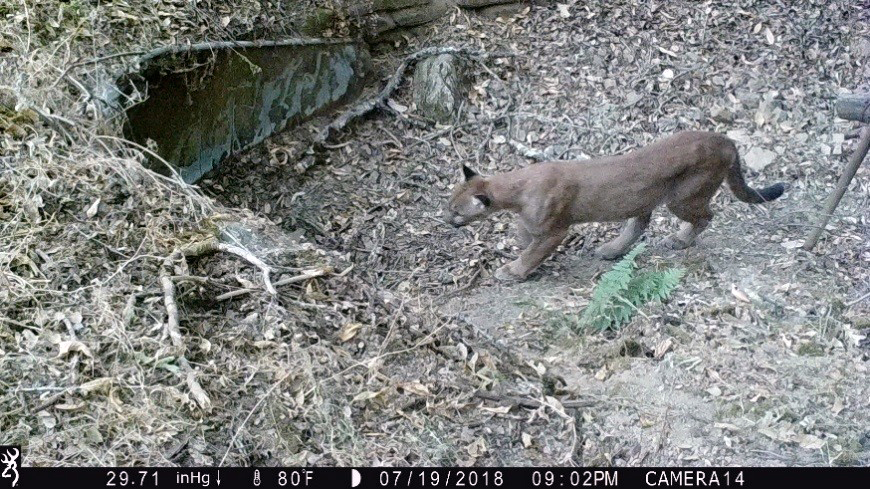
Report Date:
http://www.dfg.ca.gov/To help reduce collisions, Caltrans and the California Department of Fish and Wildlife remind motorists to be on the lookout during Watch Out for Wildlife Week, which runs Sept. 16 – 22.
“With every project we build, we look for innovative ways to protect drivers and wildlife,” said Caltrans Director Laurie Berman. “That can be as simple as installing flashing warning signs or putting in specialized fencing and crossings to provide wildlife with safe passages. Drivers can make a difference too, just by staying alert.”
Watch Out for Wildlife Week coincides with the season when California’s deer and elk migrate and look for mates, and California’s roadways often cut through these animals’ migration routes. It’s vital that drivers be especially alert now through December to avoid collisions with wildlife. These crashes not only harm wildlife, but collisions with large animals can damage vehicles and cause injury and death to drivers and passengers.
“In the fall, wildlife exhibit natural behaviors that can lead them to more unpredictable movements, and nearer to humans and roadways,” said Vicky Monroe, CDFW Statewide Conflict Programs Coordinator. “Deer, bears and other wildlife are most likely to be killed or injured by vehicle collisions between September and December. Bucks fight for mates during breeding season, does travel more with their fawns, and many deer herds migrate to their winter ranges. Black bears travel farther for food as they enter a period of excessive eating and drinking to fatten up for hibernation.”
According to the California Highway Patrol, 12 people died and 383 people were injured in 2,134 collisions with wildlife on state, county, and local roadways throughout California in 2017.
Wildlife experts offer the following tips for motorists:
The Watch Out for Wildlife campaign is supported by Caltrans, CDFW, Defenders of Wildlife, and the Road Ecology Center at the University of California, Davis.
Here are a few examples of what Caltrans, CDFW, and their partners are doing to reduce wildlife-vehicle collisions, improve awareness of key issues, and improve ecological sustainability:
Highway 395, Improving Wildlife Connectivity in Lassen County
Caltrans is modifying existing undercrossings that were installed on U.S. Highway 395 in Lassen County near the California-Nevada border more than 25 years ago. To improve the area for wildlife, Caltrans will remove deer gates, install escape ramps for mule deer, and extend fencing to guide animals to existing undercrossings. The project area will be monitored with wildlife cameras.
New fencing and a former streambed with new vegetation entices wildlife to cross under US-101 in Liberty Canyon in Los Angeles County.
Highway 101, Liberty Canyon Undercrossing in Los Angeles County
The completed environmental document for the famous U.S. Highway 101 Liberty Canyon Project was signed in September 2017. Until a large overpass can be constructed, Caltrans has managed several short-term improvements in the Liberty Canyon area to entice mountain lions to cross safely underneath US-101. New fencing is designed to prevent animals from trying to cross the highway, and a former streambed south of Agoura Road has new vegetation to guide animals safely under the highway.
Highway 101, Wildlife Monitoring Cameras in Sonoma County
Caltrans is monitoring wildlife movement on U.S. Highway 101 north of Santa Rosa. Cameras have been installed on culverts that cross under the highway, and Caltrans regularly downloads images from the cameras to understand more about wildlife in the project area. Mountain lions are just one species that have been observed checking out the culverts along US-101. Camera data will be used to determine potential future improvements that will allow animals to safely cross US-101.
Highway 74, Bighorn Sheep Warning Signs in Riverside County
Sign warns drivers to watch for bighorn sheep on SR-74.
Efforts are underway to decrease vehicle collisions with Peninsular bighorn sheep, a federally endangered species, on a windy portion of State Route 74 above Palm Desert. In June 2018, Caltrans installed four bighorn sheep warning signs with two flashing beacons to alert drivers that sheep may be in the area. This was a coordinated effort with the Bighorn Institute, U.S. Fish and Wildlife Service, and CDFW.
Report Date:
Question: My neighbor has been feeding the stray cats in the neighborhood, and now the raccoons have been coming to eat......
Report Date:
The California Department of Fish and Wildlife (CDFW) is reminding Trinity River anglers to return Coho salmon, Chinook salmon and......